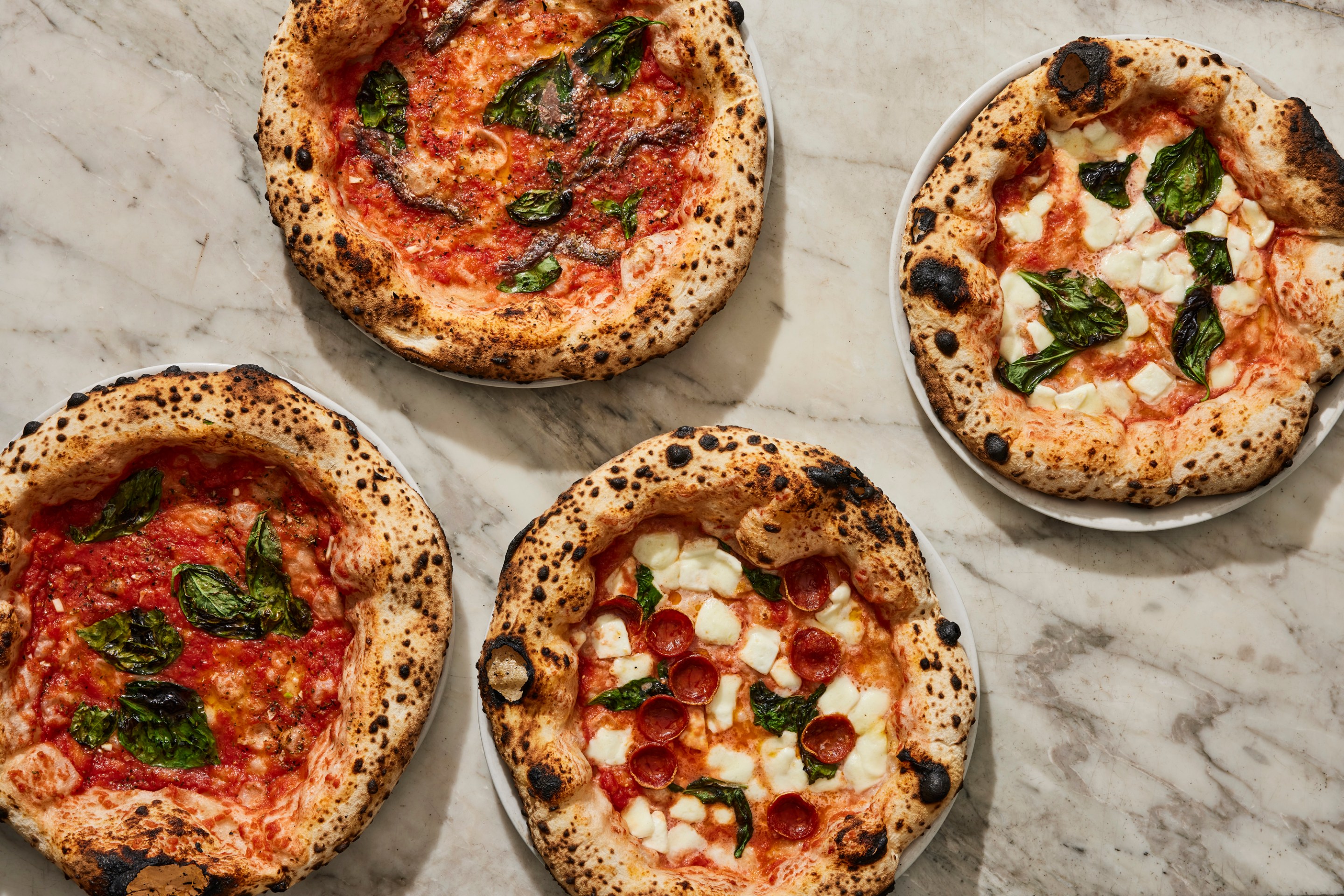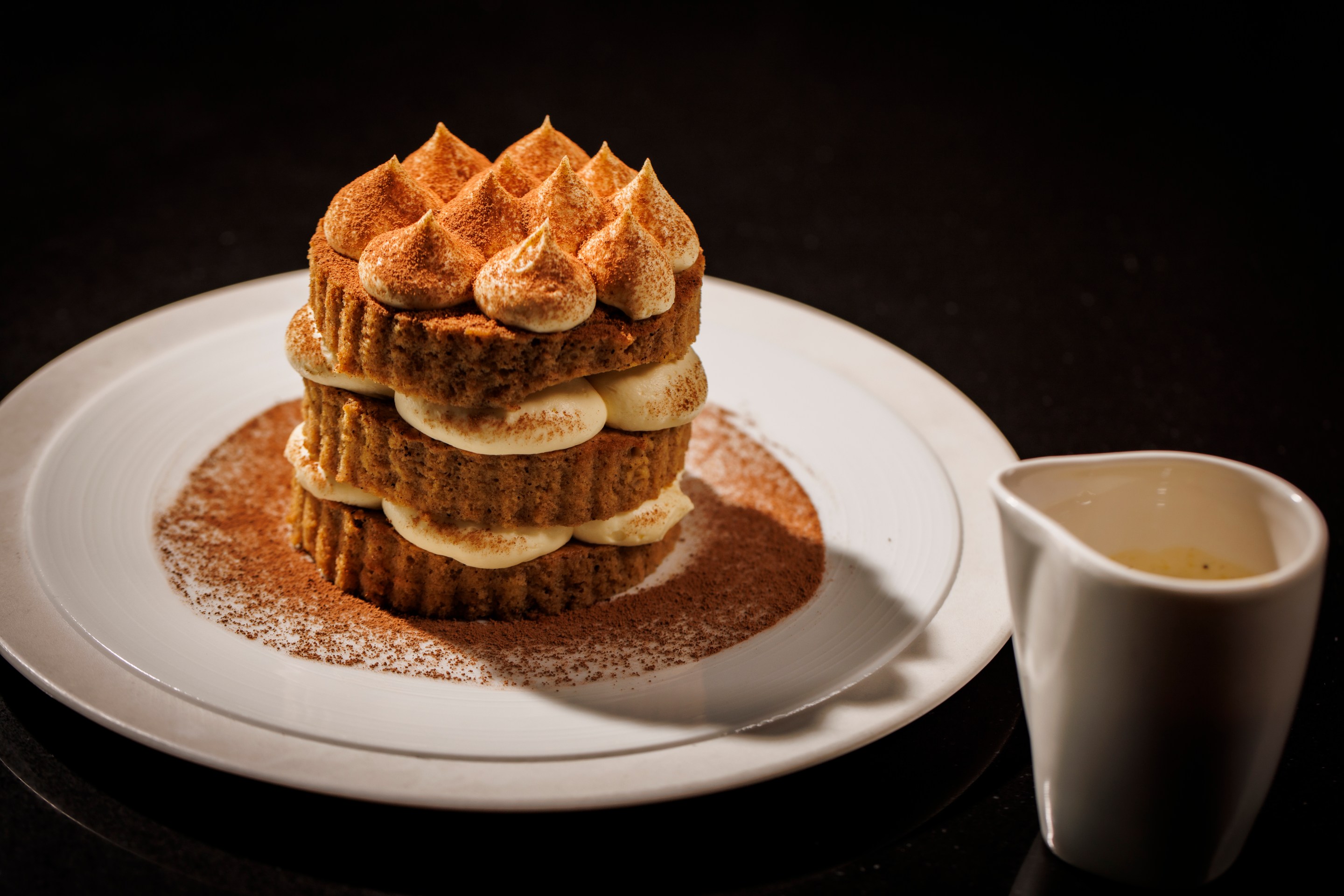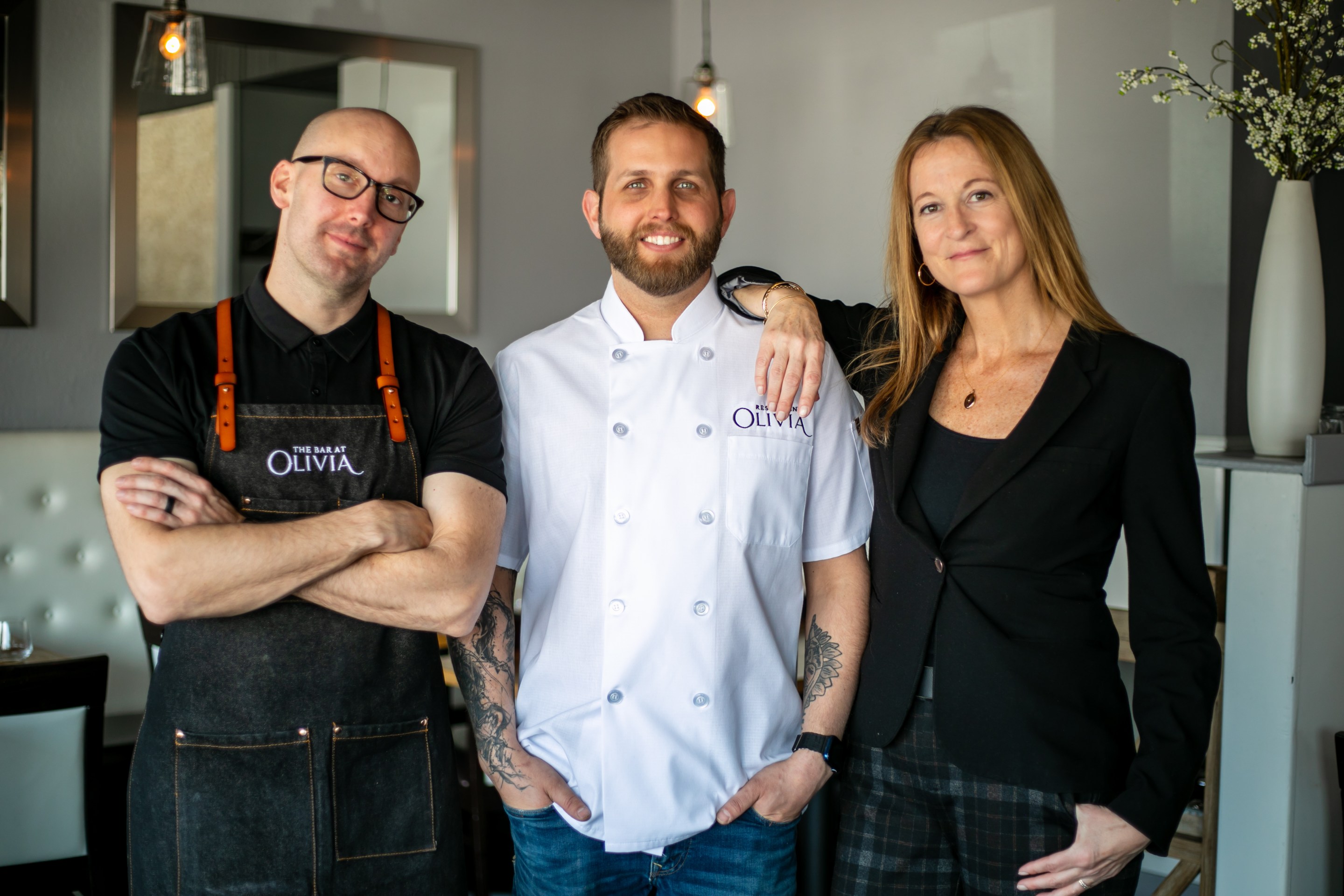The word "best" is subjective. When it comes to pizza, "best" causes heated arguments. "Best pizza in New York" can result in street fights. And "best pizza in the world" could potentially generate global conflict. But somehow, one pizzeria on the Lower East Side of Manhattan has managed to garner the title of "best" across every border and every boundary in the pizza world.
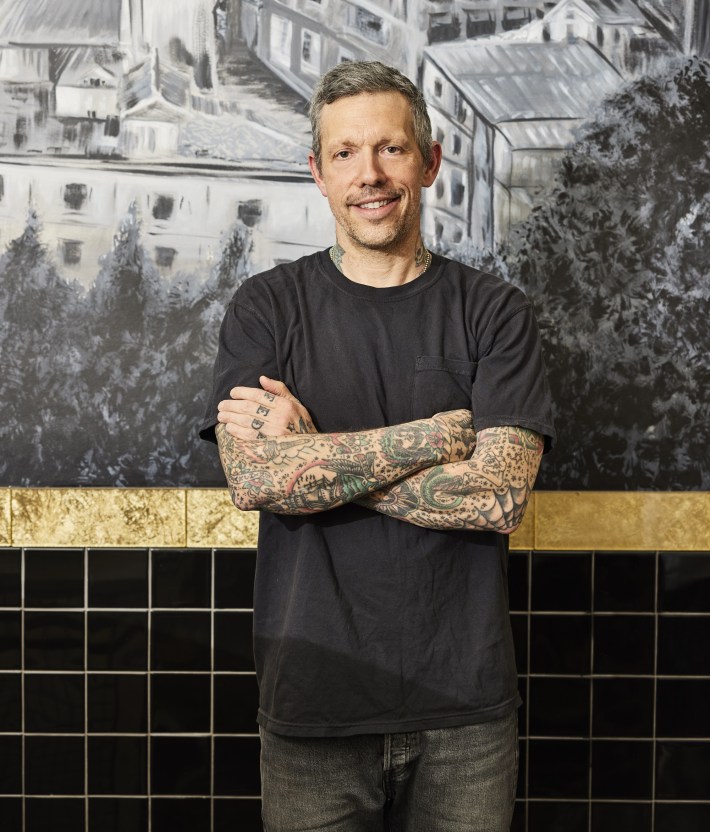
That pizzeria is Una Pizza Napoletana. Helmed by pizza impresario Anthony Mangieri, Una Pizza Napoletana is a labor of love and art that has spanned 30 years of tinkering to find the ultimate pizza bite. Mangieri is part artist, part baker, and part street punk, who has mostly eschewed the world of pizza accolades, that is until he found himself at the peak of the 50 Top Pizza list, which is the global authority on "best" pizza worldwide. In 2022, Una Pizza Napoletana won first place in the United States and in the world. In 2023, he kept his No. 1 spot in the U.S. and is still ranked No. 2 in the world.
If you ask Mangieri, he’ll tell you that he doesn’t really care about the notoriety, but pressed, deep down, he finds incredible meaning behind an Italian organization awarding him the top prizes that links him to his family’s roots back in Naples.
We wanted to learn more about Mangieri, his background, pizza, and what drives him to be great and to improve his "best" pizza every day of the week.
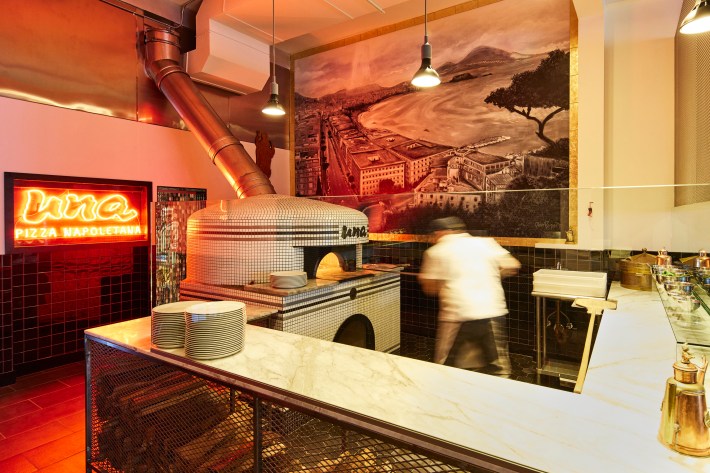
Can you walk us through your journey of how you got to where you are today?
My family's from the Naples area of Italy, and I came to Italy as a late teen with my mother. The culture of Naples, the tables and food and everything, the whole city really spoke to me at a very young age. And when I was growing up, I was kind of mixed and torn between that stuff and also super into punk rock music and skateboarding and BMX racing. So, my style is a hybrid of an old school Italian American family and all this other alternative stuff. Once I got out of high school, I just became completely obsessed with the idea of trying to be a pizza maker or bread maker. I started making pizza when I was about 15 years old, and I opened a bread bakery around 1993 in New Jersey. It was a woodfired bread bakery. I mixed all the dough by hand, and I'm basically self-taught. I wanted to open a pizzeria originally, but we didn't have enough money to do that because you needed to have tables and public restrooms and all that stuff. I opened a tiny little storefront, maybe 12-foot x 12-foot at the most with a counter. I did all the construction, and I put a wood-burning oven in the back area that was the bread bakery. And that was a lot cheaper for us to be able to open it.
I loved baking bread, and I was obsessed with bread, but I wanted to do pizza as well, and that was sort of the original thought. So, I did bread for a handful of years, and then I finally ended up opening a small little pizzeria in New Jersey in 1996. I closed the bakery and opened the pizzeria, and I ran that from 1996 to 2000 or 2001. And for those years that I was in New Jersey with the pizzeria, that was the same name, Una Pizza Napoletana. I only made two kinds of pizza, the Margarita and the Marinara, and I had no employees, so I did everything myself. We didn't have a mixing machine, so everything was hand mixed, and it was naturally leavened, so I've never made pizza with commercial yeast.
So, you made your own starter? And what kind of oven did you have?
I made my own starter. I hand mixed the dough, and it rose in trays unrefrigerated. At the time, I didn't have any servers, so I would take the orders, make the pizza, and bring the pizza to the table. I don't even remember what kind of oven it was; it was some wood burning piece of junk that maybe my dad found somewhere that we put together ourselves. It was nothing to write home about. It didn't work right; it didn’t keep heat right; it was just nothing. I mean, this was before anyone in America even knowing about Neapolitan pizza ovens or where to get them. I think I was either the first or second person to even get a Neapolitan oven in the United States when I did that in the East Village, which was many years later. Back then when you got them, I got an Acunto, which is one of the standards now that everybody gets from Naples, but the way you did it back then is you had to reach out to them, wire money to their bank account, and you didn't even know these people, and you’re like: Dear god, I hope this thing shows up. You’re sending money to some guy in Naples, and then three months later, they say the oven’s done, we're going to ship it to you. Then you have to pay for the rest of it, and then they would ship it to you. After that, I had to get a rigging company to get the thing from the port, bring it to the pizzeria, and try to figure out how to get it into the restaurant. It was a real undertaking.
After that I had wanted to move to California for cycling because throughout all this, I still was kind of obsessed with cycling and still am and got super into mountain biking and road biking. I was going out to California here and there for mountain biking and wanted to move out there, but I was afraid to move all the way out there by myself and not knowing anyone really. So, I felt like I had to do something for the growth of the business. I've been doing it now since 1993, and it was 2001 or 2002, so I finally committed to just doing it in New York City and having a bigger stage to show people what I was doing. So, I closed the Una in New Jersey, and I opened one in the East Village on 12th Street.
That was my first real place where I had servers and one guy in the kitchen doing dishes. I was able to get a beer and wine license, so I could start to highlight all the wines from the region of Campania. And I did that from 2001 or 2002 to about 2010 when I closed that one down and opened in San Francisco. I stayed out there until 2019 or so. I had that Una for almost 10 years, and then I closed it and moved back to New York into the space that I’m in right now.
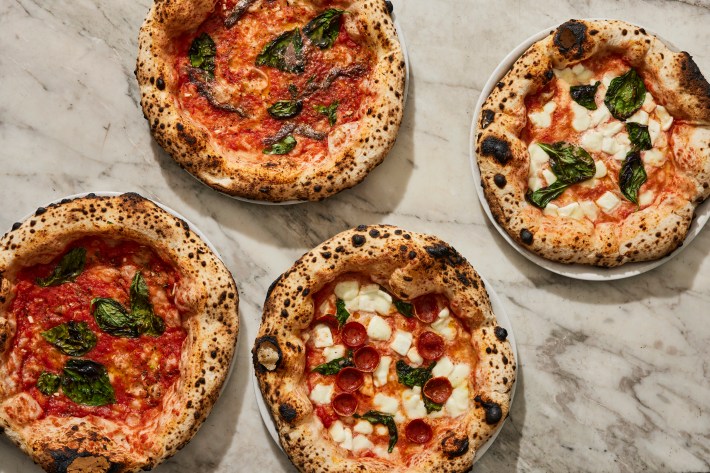
You moved back right before Covid hit, how did that affect your business?
It’s been about five years since I've been back, and about a year before Covid, I dallied with having two locations. I had two partners for the first time in my career, and it wasn't doing as good as it should. The place didn't look the way it should, and we just ended up where the ideas didn't mesh together. It started to kind of fail, so I felt like I needed to come up with a backup plan. I started looking for a location in New Jersey to reopen, and I ended up spending about a year building out a spot in the Atlantic Highlands to do on my own.
I was working at the one in the city six days a week. I would go down there to NJ in the morning to do construction then come up to do service in the restaurant. Finally, after a year of construction, we opened, and two weeks later Covid happened – but it was fine. The place in the city was not doing great, and I had sort of taken it over, and my partners weren't coming in anymore. But we're still all connected. At that point, I decided to shut the one down in the city and focus on the one in New Jersey during Covid. We actually did amazing. We sold out of dough every single day from the day we opened and did it for two years. I was able to keep my two pizza guys in the kitchen and on insurance for two years. But I knew I had to make a decision, and I had to reopen the one in New York because it's just better brand building. Even though I really love being in NJ, being able to mountain bike easier and be near the beach, I decided to shut that down. I bought out the partners and all the investors during Covid at the one in New York.
And then I rebuilt the entire interior and really got it to be where it should be aesthetically, emotionally, and finally reopened about a year and a half ago, which was March of last year. And now it's the only location I have. And other than that little, tiny two-week period right before Covid, I've only ever had one location. All I ever plan to have is this one. I don't want to spread myself thin like that. I have a big guilt complex where I feel like if people are coming in and spending their money and their time and their energy to be in there, I want to really give them all my attention and really give myself to the space.
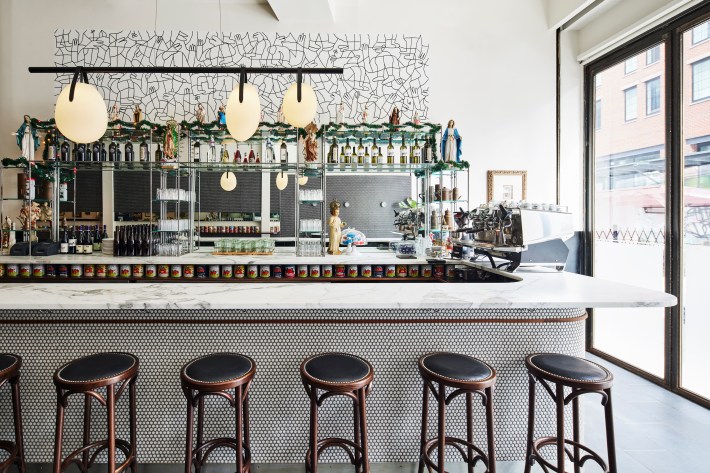
Where do you think your desire to be a bread maker and a pizza maker come from?
As a very young kid, I was super picky and particular about what I ate. It was strange even when I was a teenager and into punk rock music, all my friends would eat like crap and garbage and eat from 7-11. I was always a weirdo where I was into trying to get something good to eat. It didn't make me very popular in that scene, or easy to deal with, but that was my thing. And I think then I loved bread, and I loved pizza. From as far back as I can remember, they were my favorite things to eat. Then it just translated into what I would do because I think it could have been any career honestly. It's really more just about a kind of focus and attention to detail and being relentless at whatever you're doing. I would feel like I would have done that same approach if I was a plumber. It just turned out that I loved bread, and I loved pizza, I fell in love with Naples, and the culture spoke to me, and one thing led to another.
Your pizza is obviously inspired by going to Naples, but how would you describe your pizza today, and how do you think it's changed over the years since you first started?
Definitely, in the beginning, my goal, very innocently, and pure-hearted, was to recreate what I felt and saw in Naples because it spoke so deeply to me. There just wasn't anywhere that I experienced in America that was like that. It just felt so ethnic to me when I was there, and the food, the pizza just truly seemed like a foreign product. It wasn't anything like the pizza that I grew up eating. And I loved also John's and Totonno’s, and Grimaldi’s, all the classic spots. But when I came here to Naples and ate it, it just tasted so different and so foreign and so unique. And I felt like I wanted to figure out how to do this, and I wanted to bring it back to the US. I hadn't experienced it outside of Naples anywhere. So that was really the beginning of why I did that. And then just my personality and being kind of a kook and getting lost in details and deep diving on stuff, I just kept pushing myself to be better at it, and then at some point, I started to feel like I didn't really look towards Naples when it came to pizza. I think because I just pushed myself so far with it.
Slowly over the years, I started to feel like what we're doing is starting to become its own unique thing. Definitely nodding towards Naples and pulling from the history of Naples and using the best ingredients that would make it taste the best and what my idea of what the best is. Even ingredient selection, I’m always thinking what’s going to make it taste the best for what I think it should taste like. It's purely based on my own tastes and my own desires and my own opinion, not really taking into account the customer, or what would be the most popular thing. It's always just been what I think would be the best. And I think that's sort of the beauty of restaurants in general when they have a real personality. And you go to a place and you're like, oh, they're really giving themselves to this, and this is their version of something. So that it isn't just following along and like a current trend or anything.
So, that being said, the ingredients for me have always felt like they should be the best ingredients, whether it's tomatoes, or mozzarella cheese, and the best quality and the best tasting varieties of most of these things come from around Naples. As far as the dough goes and comparing it to Neapolitan or traditional, I don't know. I mean, we just ate pizza yesterday in Naples, and my girlfriend was like, I don't know how anybody could come into Una and say that you're making Neapolitan pizza or traditional Neapolitan pizza, because it really has nothing to do with the pizza over here anymore. Other than it's round, and it's cooked in a wood-fired oven, and it's topped with some ingredients that are from here. It's just its own thing. And it just became that from 30 years of doing this. I mean, we're coming on our 30th anniversary, and I think what's interesting is that for 30 years, we've been trying to make it better. And now the guys that work with me and my front of the house staff and everybody, our goal every day is just like, how can we be better. Even with whatever happens, like whatever accolades we received before, super busy, none of it really even carries over to the next day. We truly go in and start from scratch every day. And so, the pieces are just continuously evolving, almost without a conscious thought on wanting to make it this way or that way. It keeps going into its own thing. Over the years, it’s become much more puffy and kind of wild and crazy looking. And I just keep going with it, and sometimes I go too far with it. I'm like, oops, probably not our best night. Whether we push the hydration level of the dough and constantly mix flours and change the ratio of the starter in the dough and all that stuff.
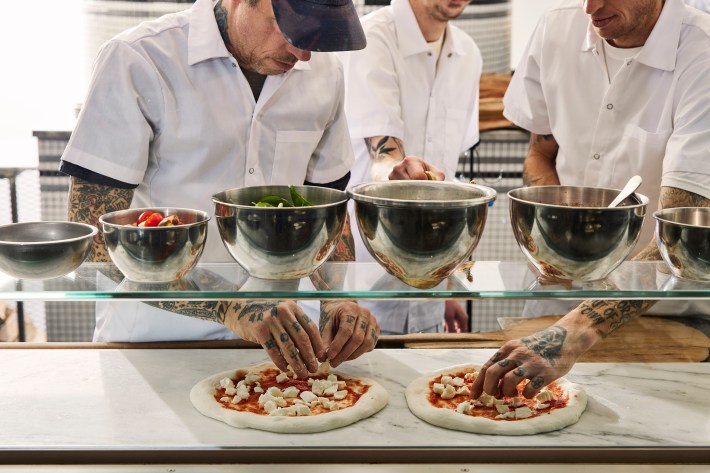
What does being at the top of the 50 Best Pizzas list mean to you?
It's shocking to me, to be quite frank. When we got it the first year in America, I was like, whoa, that was wacky. I just couldn't believe that anyone outside of my little circle of kooks got it. It was strange to me, because I felt like we didn't really fit in with anything else that goes on or in the pizza world. I've never participated in the pizza world and never just been a part of that. Even in Italy, no one really cared or respected what we were doing in Una. So, it was beautiful to have it happen. I mean, it's not something that I've ever pursued or been concerned about with trying to get, but when it happened, it was beautiful, and it was surprising, and I felt honored. For sentimental reasons it also meant a lot to me that this organization is based in Italy. It’s pretty cool that this organization that's rooted in Naples thought that highly about what we do. When we came to Italy last year, and we were sitting in the theater — me and my girlfriend and my two pizza guys — and as it was going down the list and got closer and into the top 10, we thought there’s just no way. We came over here completely being like, there's no way in hell we're getting anywhere near first place in Naples by an organization based in Italy. But when we got closer, I was like, oh my god, this is crazy. When we tied for first with this fellow that's got his place outside of Naples, it was shocking, and it was beautiful. I have to say, even though I never pursued anything like that, and still don't make any of my decisions at the restaurant based on trying to achieve these things, it still felt great to be in a place where I had been coming my whole life and fell in love with. A place I used to come with my mother, and now my daughter spends half her summers in Naples every year with her grandmother, and there's a lot here that's deeply connected to me. To be here and have that happen last year was really beautiful.
Last thing I want to ask you is about your Genio Della frozen pizza. What was the process of making it, and what makes your frozen pizza different, better, and unique?
I started thinking about it many years ago, when I lived in San Francisco, because I was thinking is there something that I could do to connect people on a bigger scale outside of what I do at the restaurant. Keeping in mind that I never wanted to have more than one location. Over the years, I've had people come and want to open other spots in the city, or in Vegas, or Miami, or wherever. I've never wanted to dilute what we do, or have someone go in and be like, hey, I went to your other place, and it sucked.
I wanted to find a way that I could do something that was on a bigger scale and outside of what I can do, but that I could be comfortable with and wouldn't take away from what we do in the restaurant or dilute what we do in the restaurant. Many years ago in San Francisco, I started looking into the idea of doing a canned tomato or an olive oil, or something, and it just kept coming back to frozen pizza as the thing that I should do if I was going to do it. Fast forward, six years later, I finally started to really go deep on it. So, we started the company about three or more years ago. The goal was that it should have been out before Covid, but everything happens for a reason. The frozen food section was crushing during that time, and it would have been nuts if we had product available then, but we just weren't ready. The pizza wasn't where it should be yet. And so, it ended up getting slowed down with that.
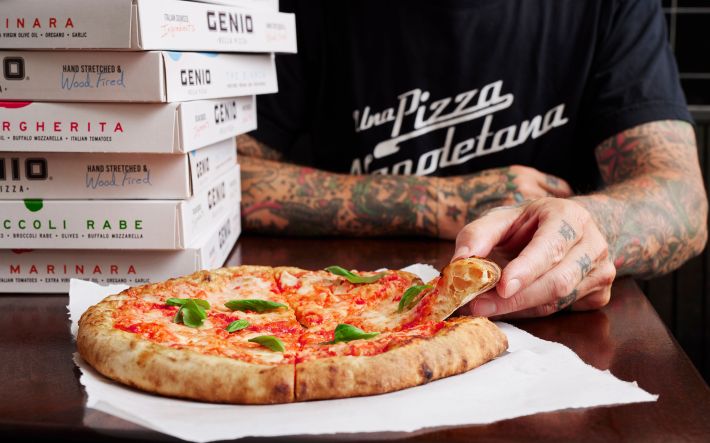
Then I started going to Italy where it's produced with a co-packer partner. And it took about three years of R&D to get the pizza where it is now. And I think what makes it different and hopefully better than anything that's out there, is one, it's not flash frozen in a restaurant. There are pizzerias that make their product in house, flash freeze it, sell it, and that's different than what we're doing. My goal was to figure out a way to do the R&D up front so that when we launch this thing, if people like it, and it works, it's already scalable. My goal was to get it as far as we could and make it as great as it can be but also be able to make 50,000 of these a day, if need be, and really grow this. That's why it took so long with the R&D because there's so many boundaries and parameters that you have to work within when you're trying to be scaled. I would go to the factory, and I would work there with them, and I'd be on the line, and every time we do a production, when I go to the factory, I feel like Lucille Ball, running around in there, picking up pizzas off the conveyor belt and yelling that there's too much cheese on it or whatever, and everyone thinks I'm crazy. But I think it's the most beautiful frozen pizza that is available that's reasonably priced and scalable. And it's all hand stretched. It's naturally leavened, and it's got a super long rise time. It's got the highest hydration that I'm able to get, and not have it get stuck to where you can't even get it through the process of making it.
When we do a production, there's about 30 people on the line. And we've had to train the entire staff when we do a run so that they know how to handle this dough. I think everyone that I've had try it, my pizza makers as well as other chefs, all think it's solid and beautiful. It's not Neapolitan because I don't think that that's possible to really reproduce and freeze because Neapolitan dough and our dough, forget it, there's no way you can make that and freeze it at scale because the hydration levels are sometimes like 90%. And it's not refrigerated, and I can't even deal with it half the time, and we do like 130 pizzas a night, and it takes us 15 hours a day to prep to do that and open. It’s a huge day of work to produce 100 plus pizzas. Obviously not scalable, right? This is not that. What I wanted to do is make something that when people ate it, they would say wow, this is a beautiful, artisan handcrafted product. It smells like bread when you cook it. It's not weird when you eat it.
Before we launched, I tasted every frozen pizza on the market and created this huge deck about every pizza because I wanted to know what was out there taste-wise, look-wise, price-wise, packaging-wise, ingredient-wise. And even the ones that I thought would be great, like from a restaurant or whatever, most of them are all verging on disgusting and smelled weird when you would cook them. The restaurant ones tend to also not actually freeze right, so when you cook them at home, they don't bake right. There's techniques and science behind making frozen food that isn't just as easy as here's my pizza, I'm freezing it, and I'm gonna keep it in the freezer for a year and hope when I reheat it, it tastes right. I just think what we have right now is beautiful, and the reason that we didn't name it Anthony or Una or anything like that was because I knew it wasn’t what we do in the restaurant. And I wanted this thing to stand on its own. And I also didn't want people to buy it in Ohio or wherever and be like, oh, this is Una pizza’s frozen pizza, and then they try it and say this isn't what I had when I ate it at the restaurant. I wanted it to be its own thing, and with my 30 years of running the pizzeria with knowledge and ideas and focus behind it, but I wanted to not dilute either thing. So that's why it's got a completely separate name, but I'm a part of it. I'm 100% the founder and the CEO, and I'm on the back of the box. I'm in it 100%. It's just a completely separate thing from what I do at Una.
